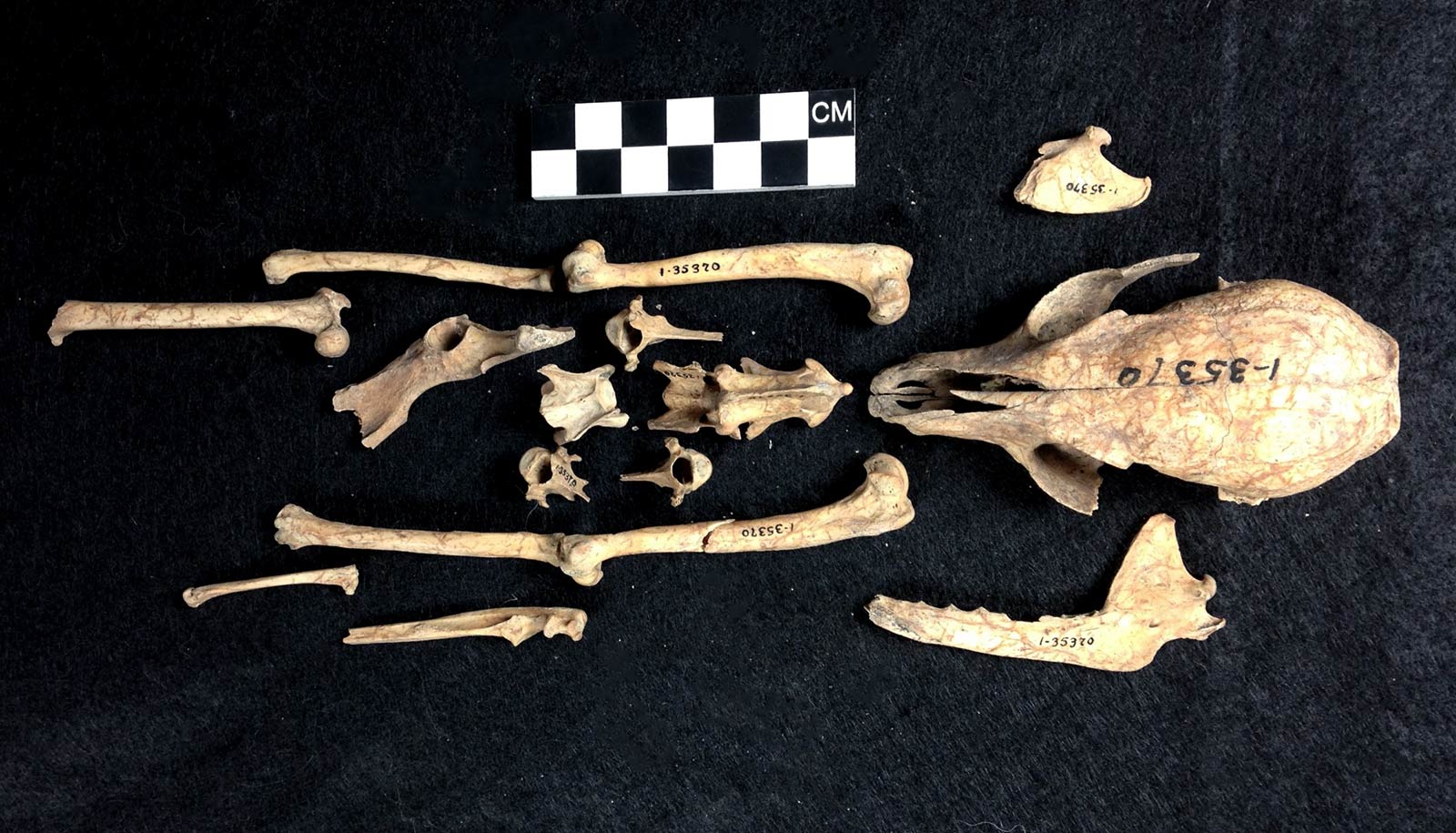Crustaceans called beach hoppers can be a significant portion of island foxes’ diets, research finds.
Island foxes are masters of survival. Having lived and evolved on the windswept, rugged, and relatively remote Channel Islands off the coast of California for thousands of years, the cat-sized canids have quite a few tricks up their sleeves. Their small size, for one, is an adaptation to their resource-limited surroundings. And they’re not primarily nocturnal like their mainland cousins, allowing them to hunt and forage at any hour.
Certainly, these unique physical and behavioral attributes helped the foxes recover following their catastrophic 1990s decline, when predatory golden eagles found their way to the islands and set up shop. In little more than a decade after the eagles were kicked out, the foxes went from “endangered” to “threatened.”

Researchers from the University of California, Santa Barbara, and Channel Islands National Park have now documented another tactic: Some island foxes living along the coast have a taste for beach food, specifically the small cryptic animals that live around the piles of drift kelp on beaches, safely above the wave wash. These tasty critters include beach hoppers (Megalorchestia spp.), which are small, shore-dwelling crustaceans that live just an inch or so under the sand, and associated species like intertidal beetles.
“We were interested in the role the beach ecosystem is playing in providing nutritional support for island foxes, generally considered reliant on terrestrial food sources.” says Mark Page, a research scientist at UC Santa Barbara’s Marine Science Institute, and lead author of a paper on the findings in PLOS ONE.
Not all island foxes take advantage of the beachy buffet, the researchers say, but the more kelp that washed onto the beach, the more of these small crustaceans and intertidal insects were available—and the more likely they would become part of the foxes’ diets.
“The abundance of kelp and of beach hoppers is highly variable among the different sandy beaches on the islands,” says Channel Islands National Park biologist and island fox expert Juliann Schamel, a co-lead author of the paper. “And where there were abundant beach hoppers, we found that some of the foxes were using them a lot.”
The researchers’ findings are a result of field surveys that sought out island fox droppings or scat near the shore at 10 study sites on Santa Rosa and Santa Cruz islands and analyzed them for their contents, specifically the indigestible exoskeletons of beach hoppers and other invertebrates in the area. They also used stable isotope analysis of fox whiskers collected from a subset of sites.
“Stable isotope analysis is particularly useful for differentiating between marine and terrestrial food sources,” Schamel says. The isotope analysis of fox whiskers can tell whether the food the foxes eat came from land-based plants (either directly or via insects and other animals that eat them), or kelp and phytoplankton. “Looking at sub-sampled whiskers from known individual foxes,” she adds, “allowed us to see that individual foxes were foraging differently from each other even in the same area of the island.”
Island foxes are known to be generalist consumers, eating a variety of terrestrial foods including fruits, insects, and deer mice. Yet, unlike their mainland cousins who have access to a wide variety of land-based food and the ability to range farther to find them, the foxes on these small remote islands are especially vulnerable to even small shocks to their terrestrial food supply.
However, sandy beaches on the islands, where marine and terrestrial food webs overlap, are potentially rich sources of food for foxes, say the researchers, from the sand crabs that live in the surf zone, to the seals and sea lions that occasionally wash ashore, to the beach hoppers and insects that live beneath the sand around stranded kelp.
It’s perhaps not so obvious during the daylight hours, when the nocturnal beach hoppers are mostly buried in damp sand, but come dusk, these small crustaceans become active and venture out by the thousands to find their favorite food: kelp wrack that washes up onshore. Throughout the night and into the early morning hours, hordes of these crustaceans are busy on the upper beach eating away at the kelp, leaving only traces of algae as the sun comes up.
According to the study, the abundance of kelp wrack was the main factor in explaining the abundance of beach hoppers on island beaches. Beaches that faced prevailing winds and currents were in a position to receive large amounts of kelp wrack that typically hosted more of these crustaceans, while beaches facing away from wind and current typically had fewer beach hoppers for the foxes to dine on. “On a kelp strewn island beach you can easily have one hundred thousand beach hoppers per meter of shoreline,” coauthor Jenifer Dugan says of a “prey resource that is just ready to be exploited by both terrestrial and marine animals.”
The researchers are careful to point out that their study considered only coastal foxes and not those who spent their time inland, and that more work needs to be done to explore whether or not the abundance of kelp might result in more or healthier foxes in the area. The findings, Dugan says, suggest that beaches, with their natural connections to ocean resources such as kelp, can confer additional resilience on local populations of the threatened island fox, especially if their land-based prey becomes scarce.
“It might be that during times of drought, when there’s no rain for the plants that support the terrestrial prey that the foxes eat, beach food would be more important to foxes,” Dugan says. “Since recovering populations are small and isolated, having all the food options on the fox’s table is good for helping this endemic species get back on track.”
Source: UC Santa Barbara



